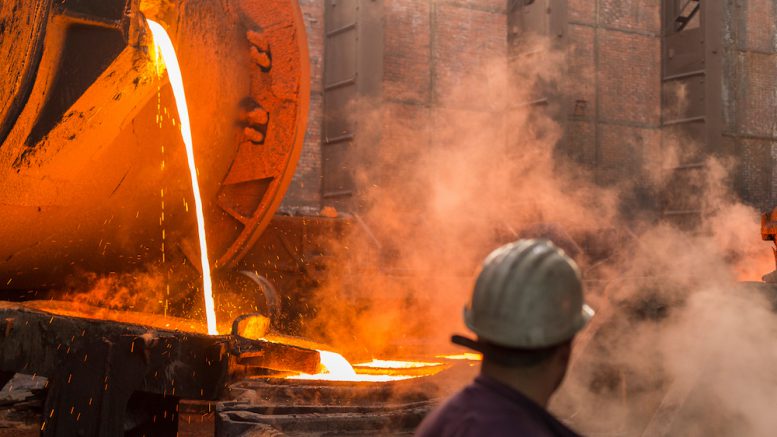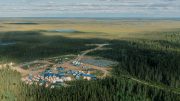You don’t need a magic eight ball to know that 2023 is probably going to be a tough year.
As 2022 comes to a close, it seems we are collectively coming to the realization that the multiple, compounding crises that have bloomed this year (even if they were years in the making) won’t magically disappear as we turn the page on 2022. Inflation is probably not as “transitory” as the U.S. Federal Reserve and others had hoped, even as rising interest rates are expected to tip most of the world into recession.
Russia, whose February invasion of Ukraine sparked commodity chaos, seems intent on continuing its attacks, even after (or perhaps because of) embarrassing defeats and no clear path to victory. As a result of the war, Europe is navigating a destructive energy crisis for which no quick fix exists. And China-U.S. tensions remain high as the West seeks to reduce its dependence on the world’s most populous nation for key industrial inputs.
In a report released in early December, Blackrock Investment Institute confirmed that things are as bad as they seem, calling the currently developing “new world order” the “most fraught global environment since World War Two” as the world splinters into competing economic blocs.
Hunkering down
Amid this uncertainty and volatility, miners are hunkering down. At The Northern Miner’s Canadian Mining Symposium in late November (the first CMS in two years, thanks to the pandemic), the Northern Miner Group’s new VP of data, Mike Sinden put some figures to the cost inflation the sector has been facing.
Using U.S.-specific data from Costmine (part of the Northern Miner Group), Sinden looked at surface mine and mill operating costs, as well as underground and mill capex. Overall, the cost increases have significantly outpaced the U.S. consumer price index (CPI), with a 7% CAGR (compound annual growth rate) in cost inflation since 2015.
“What that’s amounted to is a 60% cost inflation across most of these big indexes. So in other words, operating or building a project is about 60% more than it was just seven years ago,” said Sinden, who joined the Miner in September after spending 18 years with Wood Mackenzie.
Miners have been cushioned to some extent from higher costs by high commodity prices. Commodities were the only major asset class to rally in the first half of 2022, Bloomberg Intelligence’s senior macro strategist Mike McGlone pointed out in an early December note.
This year was a “good” year for commodities as oil, grains, copper and other metals benefitted from supply shocks stemming from Russia’s war in Ukraine and still strained global supply chains. However, interest rate hikes are likely to put a chill on commodities.
“The fallout from the rate increases is likely to accelerate in 2023 and propel a typical dump following pump cycles in commodities. Lose-lose is our 2023 commodity bias, because if the only major asset class that gained in 2022 doesn’t decline, central banks may be more likely to stay the rate hike course,” he wrote.
“Plunging global liquidity, an inverted yield curve and commodity-performance history point to increasing risks of severe economic contraction and demand destruction in 2023. It may be a question of what would stop this trajectory, and it doesn’t appear to be stimulus from the Fed, until or unless prices drop.”
In short, “There may be little to stop the commodity pendulum from swinging downward in 2023,” McGlone wrote.
In its “Metals & Mining: Key Themes for 2023” report, BMO Capital Markets sees cost inflation for miners peaking soon, but remaining at higher levels. The report’s authors, led by BMO’s managing director of commodities research, Colin Hamilton, wrote that energy prices should come down somewhat after the northern hemisphere winter, with lower economic growth and recovering supply chains taking some of the pressure off.
“This should help to see cost inflation peak for metals and mining producers, following strong like for like appreciation this year in many cases,” reads the Dec. 5 note. “However, we expect 90th percentiles of cost curves to remain decently above pre-energy constraint levels, particularly should the U.S. dollar weaken. This ‘cost step-up’ has been a consistent phenomenon in many commodity markets over the past twenty years.”
“Taboo subject”
Another interesting insight from the report is that BMO believes it’s possible that capital spending, which it says has been a “taboo subject” in recent years as miners refrained from building, could see something of a revival as concerns around supply grow.
“In our view, we are getting nearer the point of more joint ventures at the mine level to share infrastructure and push new assets forward. Shareholders are naturally nervous about concentrated capex risk on the balance sheet, given the damage this has done to various mining companies in the past,” the authors write. “However, if this were to be shared across various balance sheets, perhaps involving a non-mining participant such as a Japanese trading house or, dare we mention it, an automaker, this concern could be somewhat alleviated. This approach has been used with a high degree of success at assets such as Escondida or Antamina in the past. Moreover, with many gold miners looking to diversify into copper, we may find they are more willing JV partners than before.”





Be the first to comment on "2023: Outlook not so good"